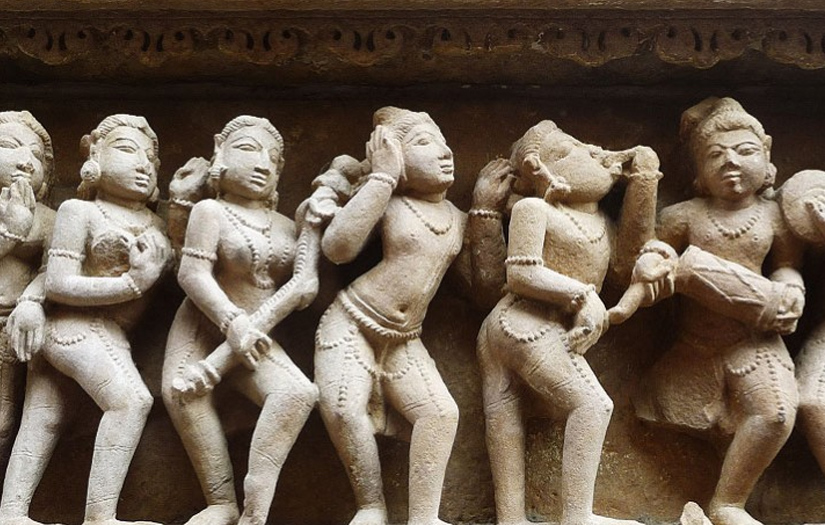Music from the Divine

Indian musical instruments owe their existence to the divine. Gandharvas, Kinnaras, Narada, Tumburu are some of the mythological legends discussed in sacred Indian texts and are portrayed as the innovators of musical instruments.
Natya Shastra, compiled between 200 BC-200 AD by Sage Bharata Muni broadly divides Indian musical instruments into four main categories – Tata Vadya (string instruments), Sushira Vadya (wind instruments), Avanadh Vadya (percussion instruments) and Ghana Vadya (solid instruments which are mostly operated through collision and require no tuning).
There are about 500 varieties of Indian instruments found today, ranging from simple forms created by tribesmen to the highly sophisticated ones used by the maestros of the music world.
Ancient wall paintings, frescos and sculptures finely depict musicians with their instruments, also suggesting the right posture associated with each one of them. Each instrument has its unique name, size, shape and construction. And so, the techniques of playing them and the quality of the sound generated are varied too.
Artisan families involved in the making of these instruments have been making them since generations, with the same old traditional methods and materials. Leather, wood and metal form the main constituents of most of the musical instruments. Master craftsmen still strive to modify existing instruments, to make them more versatile and functional, to leave their mark on the heritage.













